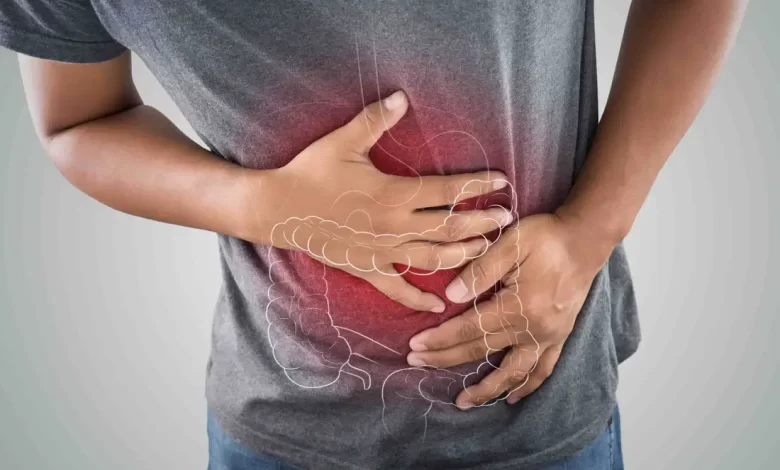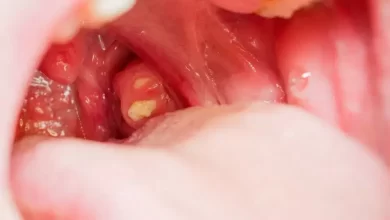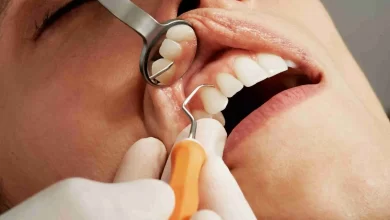10 Symptoms of Gallbladder Attack You Must Know

I was recently diagnosed with gallbladder stone. Though operation was successful but process and pre-operative procedure was painful and depressing. Data shows that 1 million people suffer gallbladder attack each year.
I was delivering my talk in a seminar when pain erupted. I fell on stage unconscious, people around rushed me to hospital. In next 15 mins pain erode and I felt fit and fine.
However, Doctor ran some tests to identify real cause of me crashing on stage but nothing surfaced. When you know something serious has happened but don’t know the reason behind it then it feels scary.
Eventually, a thorough check-up zeroed at gallstone and that explained my unbearable pain attacks. As Doctor briefed gallstone affects digestive process and those blocked bile juice creates painful inflammation.
What does the gallbladder do?
It stores bile which is used to break down fat. After you get a heavy or fatty meal, the gallbladder secretes bile via bile duct in small intestine to help with digestion.
Note: Bile is Combination of bilirubin (waste product), cholesterol, and bile salts.
Gallbladder Pain
Gallbladder pain can occur due to a stone travelling to biliary duct (known as bile tube) towards the duodenum of small intestine. Gallbladder pain can also happen due to clogging of bile in gallbladder with stone or without stone, getting filled which causes discomfort.
It’s very important to understand the root cause of stone forming or bile thickening in order to heal the root problem. The major cause of gallbladder disease is hyperthyroidism. The thyroid controls human metabolism, if its down then metabolism is also down. You may feel slower digestion, slower bowels and even slower thinking attitude.
Other common cause includes food allergies. It can cause release of histamine which cause excessive fluid in bile ducts, which in result, back up.
Gallbladder Pain Symptoms
What does gallbladder attack feel like? The gallbladder pain generally can be categorized into two symptom forms namely:
1. Acute
- Sharp and stabbing pain in the upper right side of abdomen.
- Vomiting
- Nausea
- Chills and Fever
2. Chronic
- Frequent dull pain in upper right side of abdomen accompanied by,
- Nausea
- Bloating and gas
- Burping
Tip: Right diet can help you resolve number of gallbladder pain symptoms.
Gallbladder Attack Symptoms
Since gallbladder is located to a place just below right rid cage, pain generally occur at that point. However, some gallstone travel through duct towards intestine which in worst case gets blocked.
This is above small intestine and below heart, and creates much pain. Signs of gallbladder attack or say it as Symptoms for gallbladder attack.
1. Pain Below Right Rib Cage in Chest Area
Where is your gallbladder located? The gallbladder (shown in green) is a small, pear-shaped organ that is tucked under the liver.
What does a gallbladder attack feel like?
It really feels like it’s an heart attack. As earlier discussed, gallbladder attack is often mistaken as heart attack. It happens when stomach acid gets trapped and pushed in chest, resulting in pain.
A common symptom of gallbladder attack is heartburn. This happens right after having your meal while you lay down (pressure on the chest and abdomen). This burning sensation in the chest moves upward towards upper abdomen causing neck pain.
2. Belly Pain
Gallbladder holds up the bile secreted by liver in a little sac (like storage compartment). Bile is emitted into the small intestine through duct. The process is generally meant to breakdown food (precise: fatty foods). People generally don’t feel any gallstone in gallbladder unless and until it doesn’t start creating pain.
Belly pain which generally last for 15 minutes (worst case if it remain for hours) may be a sign of gallstone. This belly pain begins in the upper right portion of the stomach.
3. Vomiting
You may feel gas pressure and stomach pain and later extreme nausea vomiting to help you relieve from the pain. This extreme nausea pain leading to vomiting is known as biliary pain or colic. It generally last from one hour to several hours after you get your meal.
While you sleep the biliary colic flows and is typically spurred by consuming a good fatty meal. Since gallbladder plays an important role in digestion process, the pain can strike soon you get your large or rich fat meal.
Tip: Distribute your diet (small meal) in 6 phases instead of 3 phases(large meal). Try to include non fatty foods in your meal.
4. Indigestion or Gas
This type of pain could be vague and little difficult to differentiate from similar issues in people who do not have gallbladder disease. People come up with complaints of gas or abdominal discomfort just after having their meal.
5. Lack of Appetite
Gall bladder pain in general occurs when bile ducts are blocked. Bile secreted from liver is made up of waste called bilirubin, and is mostly common in people with weak immune system.
If you happen to feel like nausea and start neglecting food, then you should visit a doctor. A simple blood test will show increased level of bilirubin, alkaline phosphate and enzymes.
6. Jaundice
Gallstone is a real enemy to the body. It isn’t a foreign substance which is logged inside the body, but a self created substance which when blocks bile duct creates a havoic.
It can even enter into your bloodstream turning your skin and eyes into a yellow hue, popularly known as Jaundice. If gallstone is present, chances are that bile might not be released into small intestine to participate in digestion process.
When bile remain blocked it remains in liver and populates after some interval of time. This build up concentration of bile will eventually lead to increase in the level of waste product called bilirubin in the blood, and so results in Jaundice.
7. Changes in Urine Color
If stones are formed inside gallbladder, the bile pigment may change urine color into dark brown or yellow. For some patients, maroon colored urine has also been found. If you happen to see blood tinged urine, its not gallbladder issue, it indicates kidney damage.
8. Stool Changes
When bile duct is blocked because of gallstones (a mixture of hardened bilirubin, cholesterol and bile), the color of stool may be seen in clay like color or can become pale. The issue can be better indicated by the explosive movement of bowels.
This can even be loose, float or become very frequent (more than 4 but around 10 times a day). Another common symptom is diarrhea and can result in dehydration if the lost fluid is not filled up. If you feels such indication chances are you are suffering from gallstone attack.
9. Diarrhea
If you are under gallstone attacks, you may feel radiating pain in abdomen, chest bone and in lower back with explosive bowel movement (can be frequent, around 4 times daily). The pain usually tends to come and go.
Also, if there is an insufficient bile (a strong indication of blockage) then you may be suffering from diarrhea as well. Take a doctor’s concern if you happen to face frequent bowel movement (10 per day).
10. Fever
Normally a patient suffering from fever and chills after gallbladder attack is a sign of infection in bile duct. The researchers at the University of Maryland Medical Center released a data indicating one third of gallstone patient suffers fever and chills.
Bile duct blockage will never result to fever. Keep in mind that severe fever can occur with acute cholecystitis, followed by nausea and vomiting. If this happens, move fast for medical help and seek medical attention as soon as possible. It’s been known that cholecystitis, commonly known as gallbladder inflammation, is life threatening problem.
Listed above were some symptoms of gallstones and common symptoms of gallbladder attack. Lets get to know little more about gallstone in deep which may be helpful.
Types of gallstones
There are number of various gallstone types, but here are main three types:
— Mixed Stones
- Most common in Younger and older
- Made up of cholesterol and salts
- Develop in batches
— Pigment Stones
- Small in size, but in numerous
- Greenish-Brown in color, due to particular pigments
— Cholesterol Stones
- Made up mainly of cholesterol
- Can grow large enough to block bile ducts
Tip: Cholesterol stones are formed when it’s not controlled. Cholesterol is an important asset for the body used for different purpose but if it increases can create lot of problem.
Causes and Risk Factors For Gallstones
The fact is formation of gallstones is more common in women and not men, over weight people and family history of gallstones.
There could be number of reasons of the formation of gallstones and gallbladder attack. For some people, if gall bladder is not emptying normally, it may leads to the formation of gallstones.
In other people, formation of cholesterol crystals in bile makes favorable place for it to grow into stones.
Diagnosis of Gallstones
A simple diagnosis method is physically examination or X-rays but it has been found that this method is too traditional and fails to detect average and small gallstones. However, below are other methods which doctors use to diagnose presence of gallstones.
- Ultrasound: Sound waves are used to create a picture of presence of gallstone(s).
- Endoscopic test: A thin tube is passed (or swallowed) through oesophagus to picture the presence of gallstones.
- Hepatobiliary iminodiacetic acid (HIDA) scan: A kind of nuclear scan used to see how well the gallbladder is functioning.
- Magnetic resonance cholangiopancreatography (MRCP): A form of Magnetic resonance imaging (MRI) technique to scan liver, biliary and pancreatic system.
Closing Words
Although gallstone can be life threatening but the case are rare. You must not rush for the surgery and remove gallbladder to get rid of gallstones.
Some people reported that having right diet (non-fatty foods) and some little medication helped them to release gallstone from the body.


